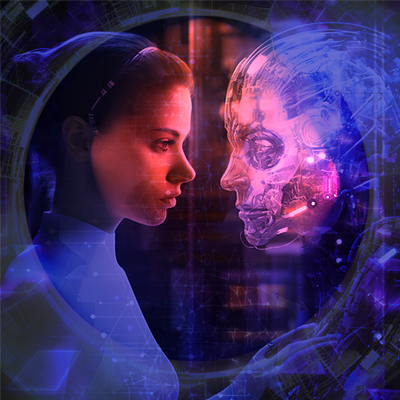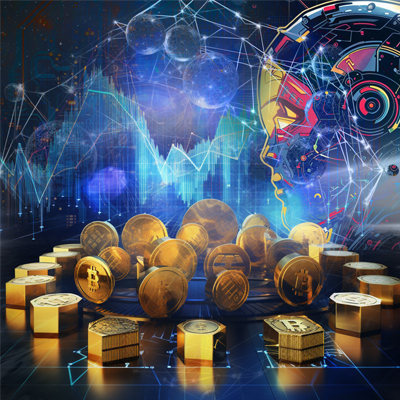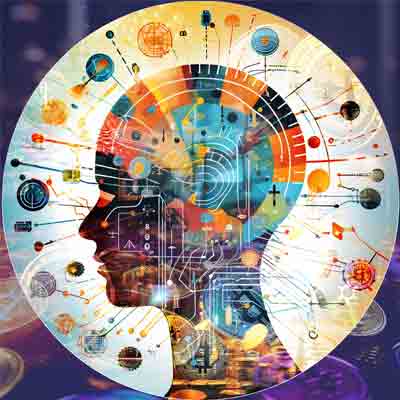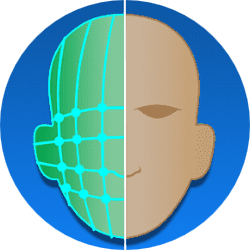Ten AI × Web3 Challenges That Blockchain Must Solve
Nov. 14, 2023. 6 min. read.
6 Interactions
Unravel the complexities of Web3 as it marries AI and blockchain. From privacy battles to regulatory hurdles, discover the pressing challenges reshaping the tech landscape.
In previous articles, we discussed the growing convergence of artificial intelligence (AI) and blockchain technology, as implemented in Web3, and the use cases of cryptocurrencies like SingularityNET’s AGIX token.
The integration of these new digital tech fields would seem to be rather straightforward, but it’s quite the opposite. It can be a complex or near-impossible endeavor which some experts like DeFi lord Andre Cronje deem to be a waste of time.
This is because blockchain serves to record historical financial data in a transparent and deterministic manner, while AI is a “black box” (in the words of Cronje) that delivers unpredictable results by design based on the input it receives.
As a result, there are several serious challenges that must be addressed to fully realize the underlying potential of AI and blockchain technology. Let’s take a quick look at ten of the most pressing issues.
Complexity
AI models traditionally have had a data collection problem; they have to connect to datasets from different parties. This can lead to interoperability issues, technical complexity, and a lack of unified standards. The same issues are also pop up in the blockchain and cryptocurrency sectors, which have created workaround solutions like cross-chain bridging. These are distinct but important technologies, still in an early stage of maturation, and they require specialized, costly expertise.
Scalability
AI applications often need high-speed processing and low-latency communication. This can be difficult to achieve on a blockchain network that has limited throughput and slow consensus mechanisms.
Blockchain networks also face the problem of scaling: storage and energy demands grow as the networks grow in size and complexity. Viable scalability solutions include the use of layer-2 and layer-3 networks, as well as sharding, something that Vitalik Buterin has touted as one of the three transitions Ethereum requires for global adoption. Ethereum itself will soon implement its EIP-4884 Proto-danksharding upgrade to make it easier for L2 chains to scale without compromising on transaction cost and data privacy.
Data Privacy and Security
One of the most important currencies of the modern era is data. It has been said that future wars will be fought over data, not oil, water, or gold.
Blockchain technology, known for its decentralized and immutable nature, presents challenges in handling sensitive data in AI applications. When AI algorithms are integrated with distributed ledger systems, sensitive data used for training models or executing smart contracts may be exposed to all participants in the network or to malicious third parties.
This raises questions about how data security and privacy are maintained. Data can be safeguarded through encryption and zero-knowledge proofs and ensuring strict access control.
Without addressing data privacy and security, generative AI models may struggle to be adopted by major businesses.

Skills Shortage
The rapid evolution of AI and Web3/blockchain often outpaces the availability of professionals with skills on the cutting edge. Artificial intelligence is rewriting the workbook as Goldman Sachs claims that the emerging tech will impact 300 million full-time jobs globally, yet this revolutionary industry suffers from a skills shortage.
As such, technical requirements have become the key challenge in scaling high-performance AI projects. The skills gap can only be bridged by educational programs and a lively community of learners. Upskilling in these areas is essential for addressing this shortage. AI companies need to appeal to white-collar employees by reiterating that AI is not just taking over jobs but creating new employment opportunities.
Regulatory Challenges
AI and blockchain/Web3 are disruptive technologies; they could change the world as we know it. Therefore, they face regulatory hurdles from genuinely concerned lawmakers, including some who just oppose the existence of these technologies. Elon Musk has voiced his concern, saying that AI must be regulated as it poses risks to civilization. Over 1100 tech leaders earlier this year signed a letter of concern over the rampant growth of artificial intelligence and called for responsible development.
The crypto industry has endured enough regulatory gaslighting from different authorities, and sometimes, the industry has frequently shot itself in the foot through shady individuals and corrupt companies. The industry needs to rebuild after flagship crypto entities such as FTX, 3AC Capital, Terra, etc. went belly-up in 2022.
Integrating AI in a blockchain company often involves dealing with regulatory challenges related to data privacy, security, and transparency. For AI and Web3 to thrive, it’s crucial for companies to find common ground with governments and regulatory bodies. AI and blockchain-specific regulations must provide clarity and encourage innovation within the confines of the law.
Lack of Standards
There is no set standard for integrating AI and blockchain, which can lead to problems with interoperability. This lack of uniformity may result in market fragmentation, which could stifle innovation and adoption.
Email became successful because it follows a common standard (called SMTP). A Gmail user can easily send and receive emails from Yahoo or similar services. The absence of clear standards in AI and Web3/blockchain can hinder development. Establishing universal standards for blockchain and AI protocols can facilitate smoother integration and collaboration across platforms.
After all, standardization leads to easier use, and by extension, wider adoption of AI and blockchain/Web3 technologies.
Decentralized AI Models
What if AI could leverage one of the major selling points of blockchains – decentralization? Decentralized autonomous organizations (DAOs), tokenization, and market analysis and trading are all areas where decentralized AI models can be used to reduce the risk of single points of failure and enhance trust. Using blockchains to store and distribute certain kinds of data is one way to achieve this. Several AI-focused cryptocurrencies could provide viable solutions for building decentralized AI models.
User Adoption and Education
Mass adoption might prove the major roadblock for AI and blockchain. The period of preaching to the choir is over; AI and blockchain developers must build so-called killer apps that naturally attract the masses to these technologies.
For AI and Web3/blockchain to gain wider acceptance, user education is key. The public must be informed about the benefits and potential applications of these technologies.
This could come in the form of events, articles, and video content. The use of AI in the newsroom can also go a long way in writing factual, unbiased news articles that bring more people to AI and blockchain tech.
Demonstrating real-world use cases is the foundation for mass user adoption. They can’t meet the lofty goal of onboarding the next one billion users if they don’t offer practical apps that act as a bridge between Web2 and Web3.
On a positive note, companies are more interested in blockchain technology. A survey carried out in early 2023 revealed that nine out of ten businesses in the US, UK, and China are adopting blockchain technology.
Tokenomics and Governance
Tokenomics and governance are central to Web3/blockchain ecosystems. Many people and investors study the tokenomics of a project before they decide on whether they should invest in it or not. On the other hand, governance builds crypto communities by allowing individuals to vote on decisions that affect the community collectively.
Implementing effective governance models and clear tokenomics can enhance transparency, fairness, and the overall success of blockchain projects. This goes a long way in promoting blockchain projects.
Conclusion
AI, applied correctly, can greatly enhance the impact of Web3 in the coming years. Or the opposite could happen! While the challenges covered in this article would appear daunting, it’s normal for any new technology to have some teething problems in early years.
For example, think back at the early issues with mobile phones and 3G networks. And before that, remember getting online through dial-up? Getting it right early on with the right frameworks and ethical decisions may prove to be the biggest challenge of all.
Let us know your thoughts! Sign up for a Mindplex account now, join our Telegram, or follow us on Twitter.

.png)

.png)


.png)








2 Comments
2 thoughts on “Ten AI × Web3 Challenges That Blockchain Must Solve”
I agree. the coming war will be driven by data. Nowadays or in this modern era, many people cannot protect their personal data and there are also many hackers who steal important state data to use as tools of war on the internet. It's easier to control the times through fake news spread on the internet
🟨 😴 😡 ❌ 🤮 💩
i like read the topic
🟨 😴 😡 ❌ 🤮 💩